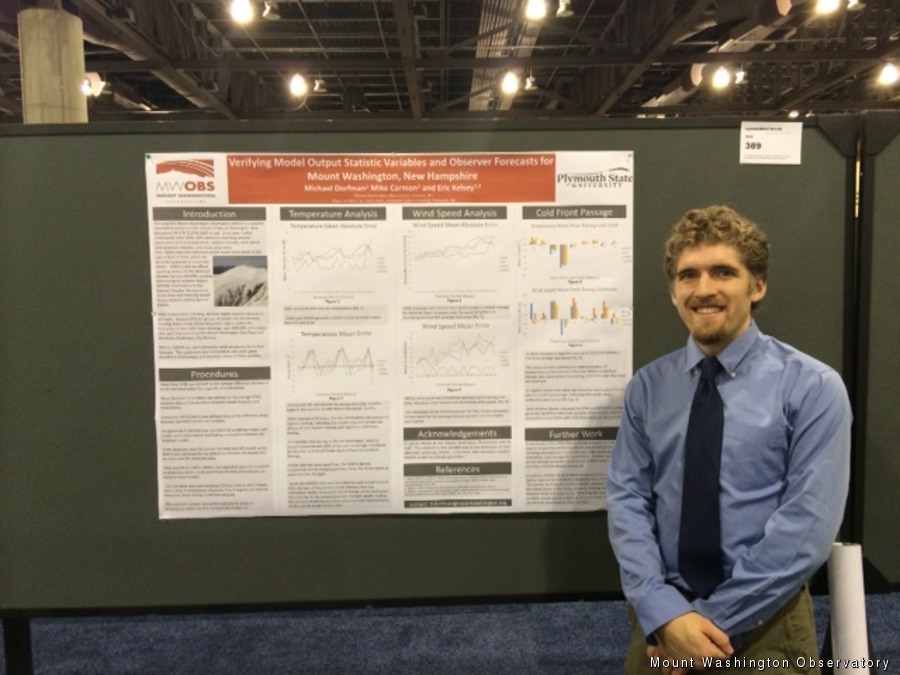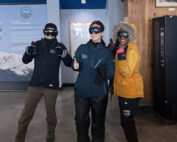The Mount Washington Observatory at the American Meteorology Society Annual Conference
2015-01-07 17:34:11.000 – Michael Dorfman, Weather Observer/IT Specialist
I was lucky enough to be able to travel to Phoenix to present a poster of my research on model biases on Mount Washington. I will attempt to broadly summarize my research here. I looked at Model Output Statistics (a description for which can be found here) for two models run by the National Center for Environmental Prediction (the GFS and the NAM) and compared them with actual recorded variables on the summit. In this analysis, I looked specifically at temperature and wind speed biases. With temperature, I found that both of these model MOS outputs overestimated temperature during the day and underestimated temperature at night. One possible explanation for this bias could be that the summit is in the fog approximately 60 percent of the time. The fog acts as an insulator, lessening the amount of daytime heating that would occur on the summit, as well as the amount of cooling that would occur at night. In addition, I analyzed wind speed on the summit and found that, overall, wind speed was overestimated by the MOS output, with an increasing overestimation the further you looked out in the model. While this historically hasn’t been the case for wind MOS variables, the way MOS variables are calculated is constantly changing. The models have only recently changed to their current setup of overestimating wind speed values. I also looked at Consensus MOS (CMOS), which was defined as the mean between the two models’ MOS numbers, as well as a Weighted MOS (WMOS), which consisted of a consensus with the model which behaved more accurately weighted more heavily. While there was no significant drop in error with the CMOS, WMOS did consistently have a lower mean error, especially for wind speed. Hopefully I will be able to continue this study in the future, looking not only at biases in certain variables, but also how variables interact with each other, to try to get a more skillful forecast aid to the forecasters on the summit, and therefore a more accurate forecast out to the general public.

Michael Dorfman, Weather Observer/IT Specialist
Team Flags Return for Seek the Peak’s 25th Anniversary
Team Flags Return for Seek the Peak's 25th Anniversary By MWOBS Staff Mount Washington Observatory is looking forward to continuing a much-loved tradition for Seek the Peak’s 25th Anniversary: Team flags. In inviting teams
Meet Summer Interns Zakiya, Max and Maddie
Meet Summer Interns Zakiya, Max and Maddie By MWOBS Staff We are excited to welcome six teammates to the summit of Mount Washington this summer! During their internship, these students and graduates will play
Saying Goodbye to the Summit
Saying Goodbye to the Summit By Alexis George After an extraordinary last three years working as a Weather Observer and Meteorologist, I am excited to pursue a different career. As sad I as am




